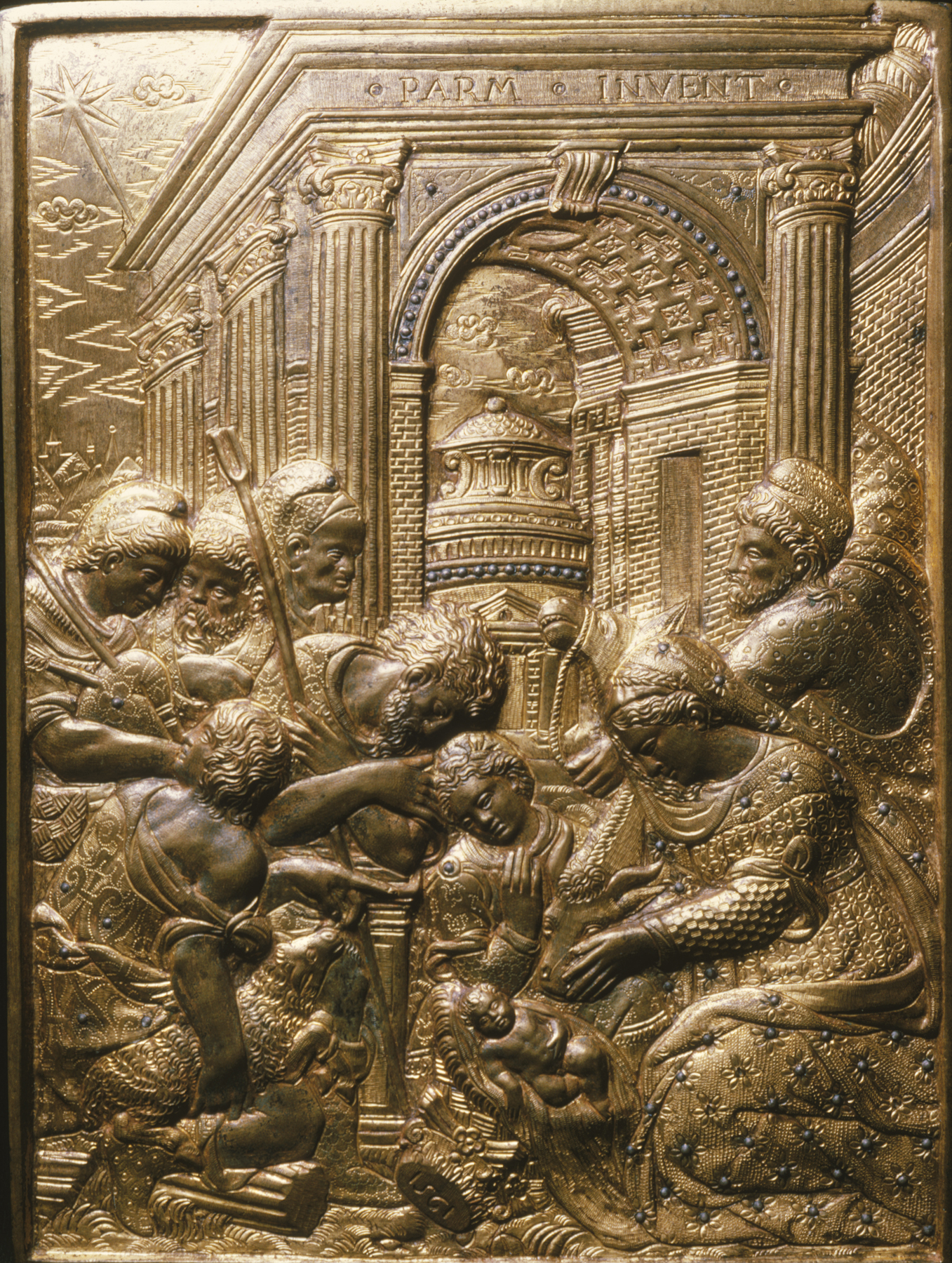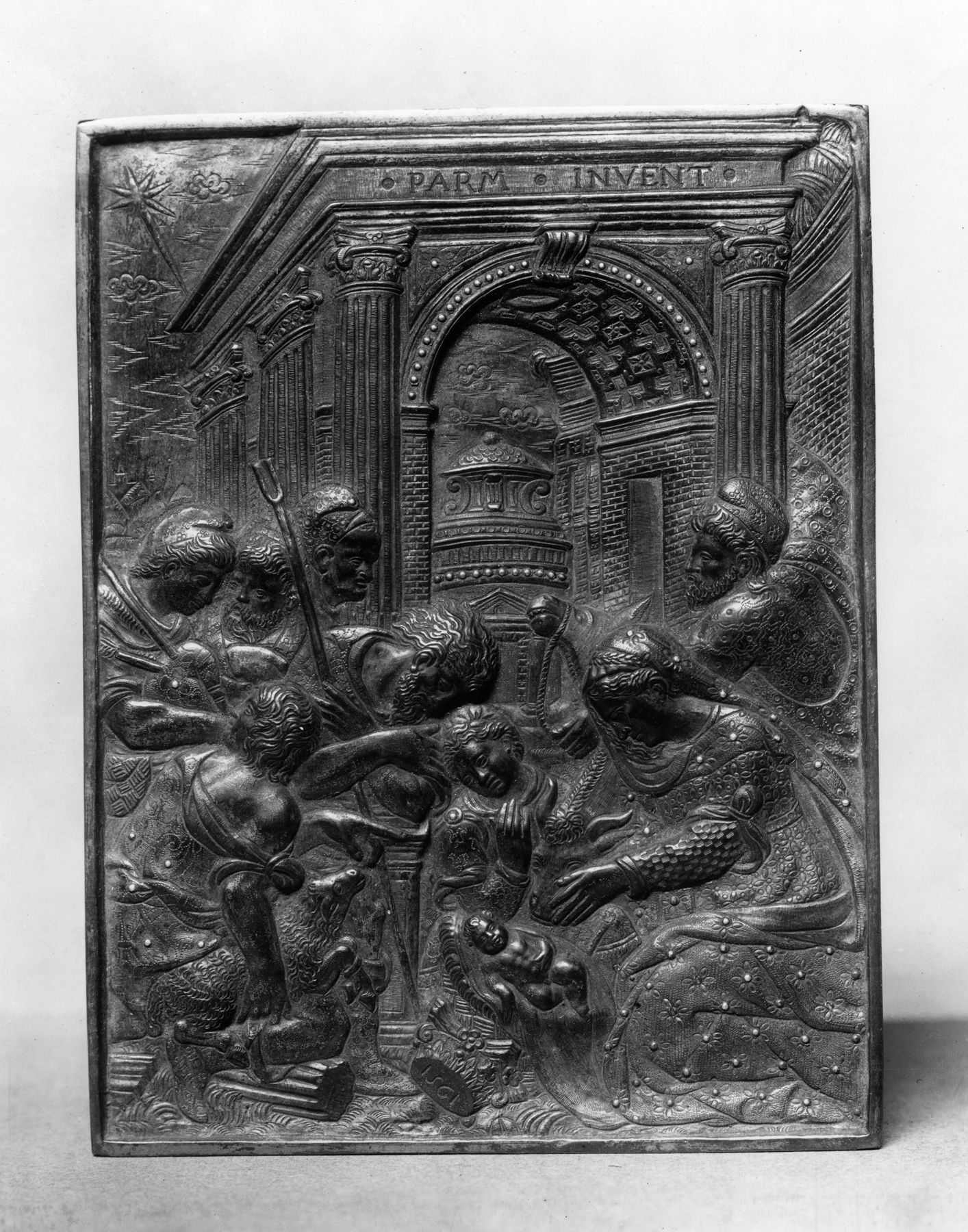Plaque with the Adoration of the Shepherds
(Renaissance Europe )
A classical temple defines the setting as the ancient Roman world and creates a "stage" for the scene of the Christ Child worshipped by Mary and the shepherds. In 16th-century stage design, classical buildings were thought the appropriate backdrop for plays about the lives of kings. Here, the setting may be meant to convey that Christ, even in his humble birth, is King of Heaven.
Most of the surface is gilded, but the artist left the bronze uncovered in the areas of skin to evoke warmer flesh tones. Silver ornaments the brocade clothing and the temple, accentuating surface patterns. The inscription refers to Bonzagna by his nickname Parmense ("from Parma") and credits him with having "invented" the composition as well as having executed it.
Inscription
Provenance
Provenance (from the French provenir, 'to come from/forth') is the chronology of the ownership, custody, or location of a historical object. Learn more about provenance at the Walters.
Henry Walters, Baltimore [date and mode of acquisition unknown]; Walters Art Museum, 1931, by bequest.
Conservation
| Date | Description | Narrative |
|---|---|---|
| 11/26/1958 | Treatment | cleaned; coated |
| 10/8/1987 | Treatment | examined for condition; cleaned |
| 8/28/1990 | Examination | examined for condition |
Geographies
Italy, Parma (Place of Origin)
Measurements
H: 7 7/8 × W: 5 7/8 × D: 5/16 in. (20 × 15 × 0.8 cm)
Credit Line
Acquired by Henry Walters
Location in Museum
Accession Number
In libraries, galleries, museums, and archives, an accession number is a unique identifier assigned to each object in the collection.
In libraries, galleries, museums, and archives, an accession number is a unique identifier assigned to each object in the collection.
54.229




